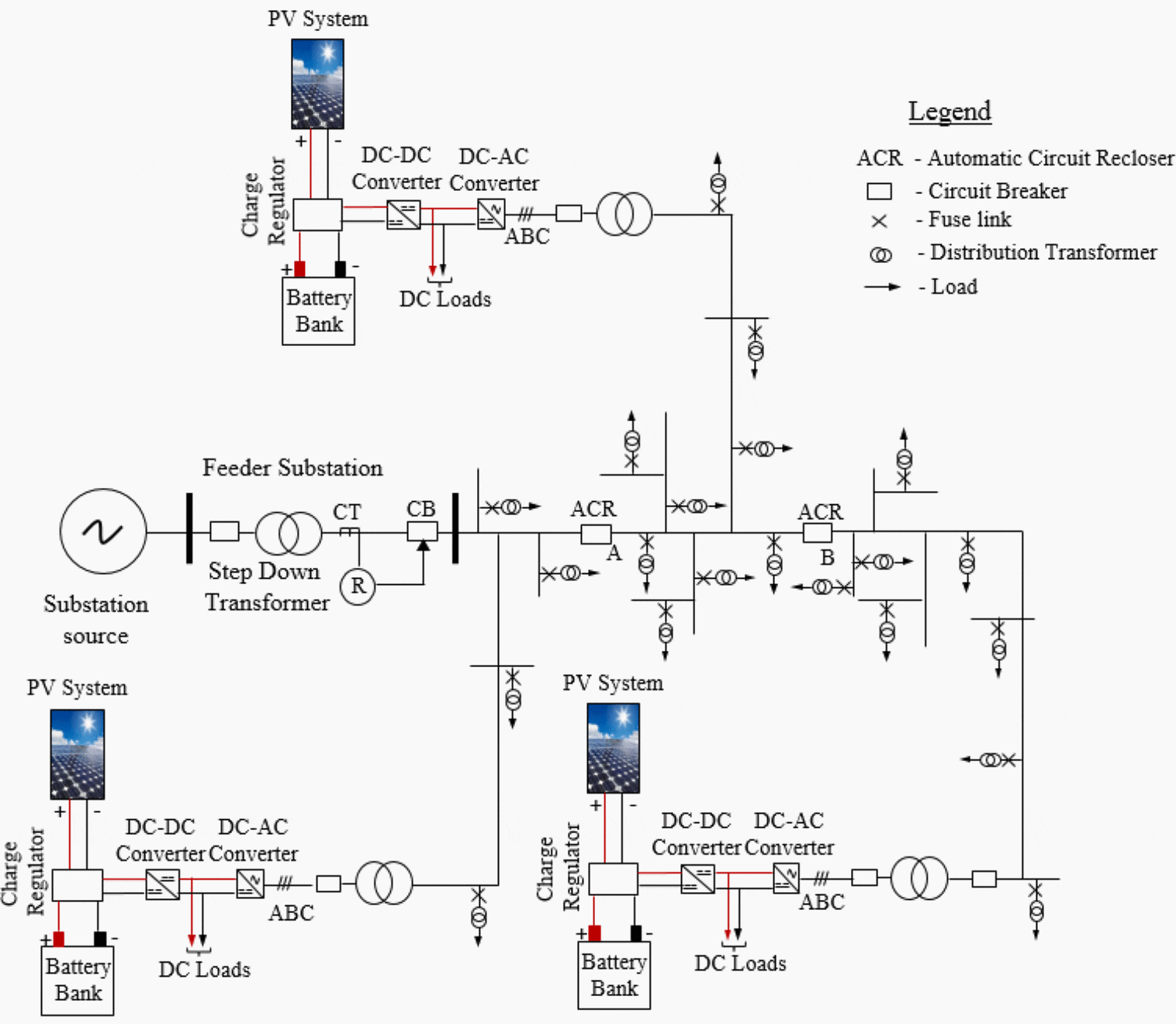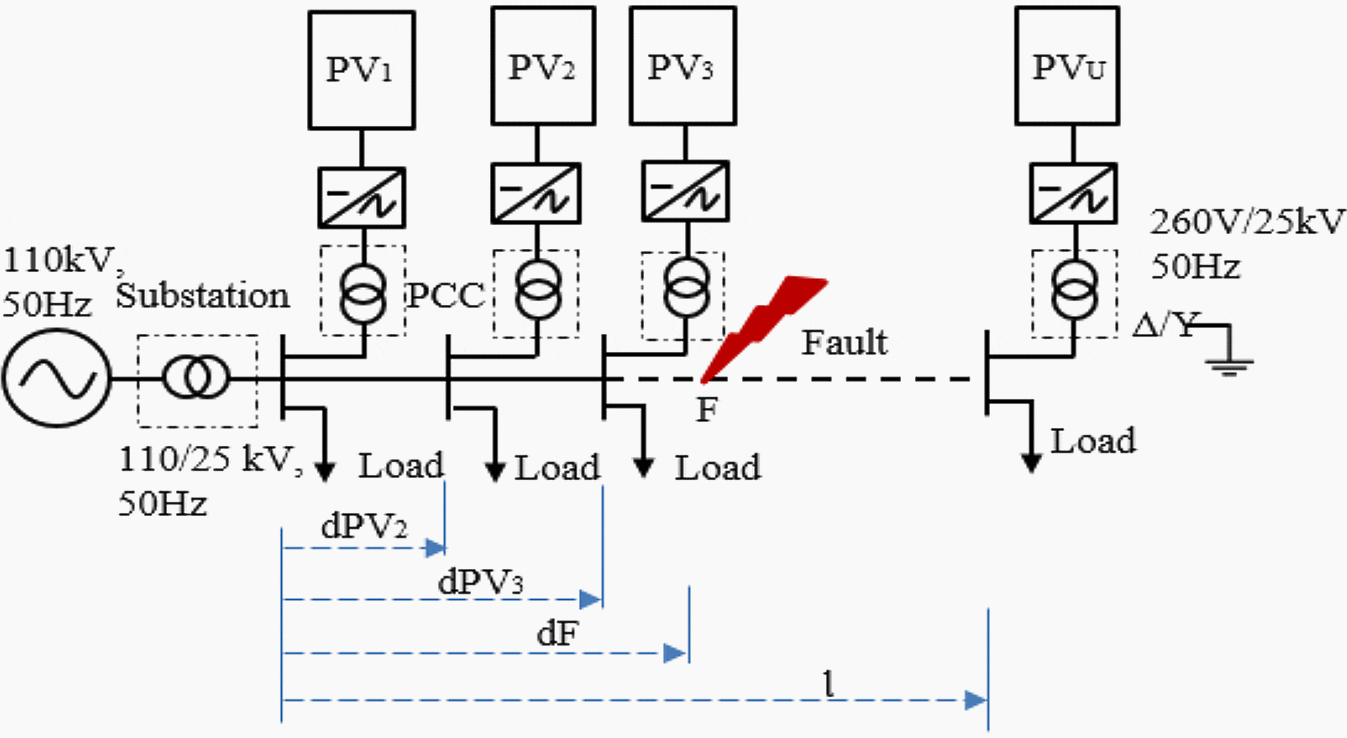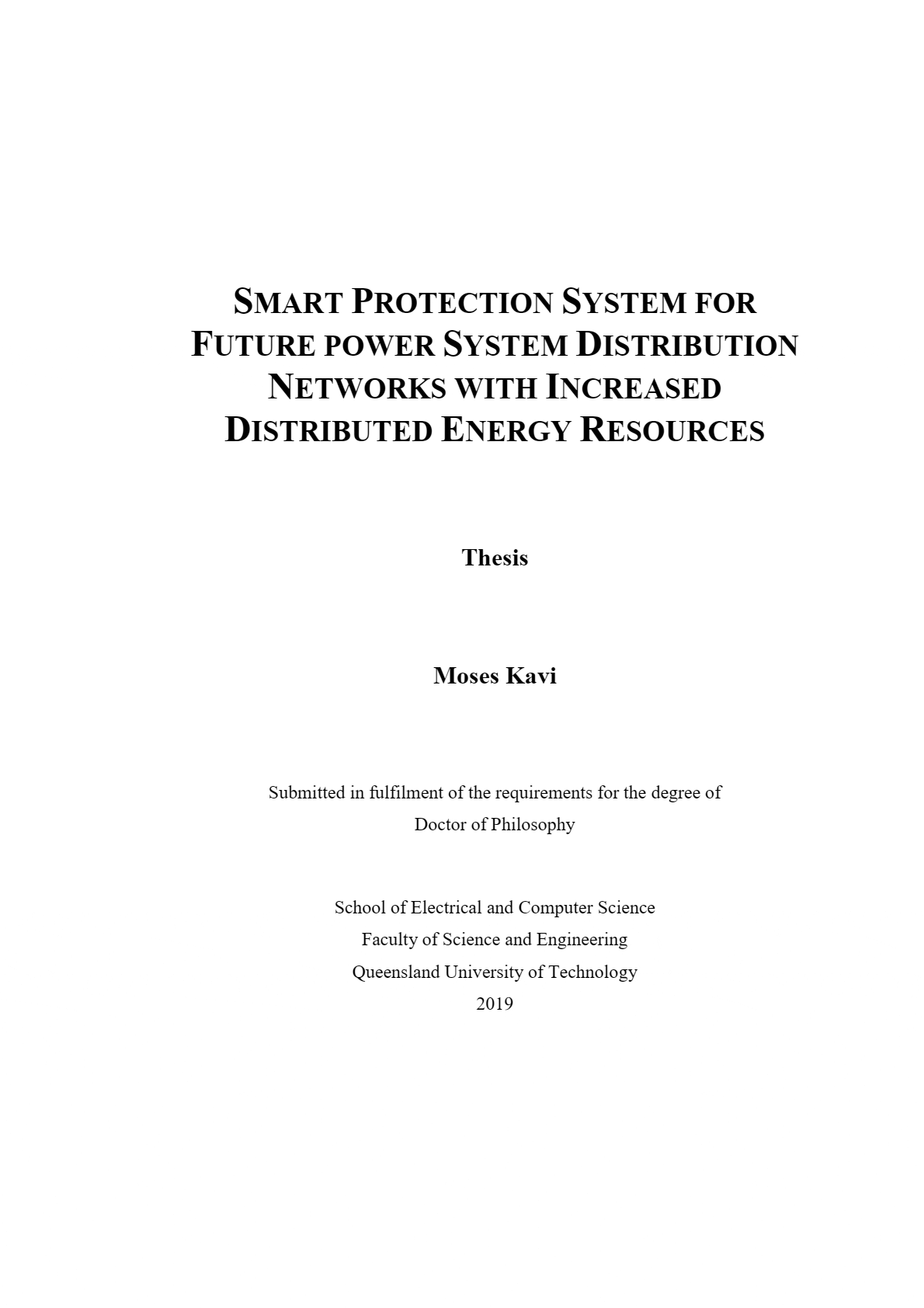Protection is getting complicated
Existing distribution feeders and their integrated protection systems are not designed for high penetration of renewable energy (RE) based distributed energy resources (DERs). The overcurrent protection systems are designed considering the passive, unidirectional current flow. However, integration of the RE based DERs such as PV systems through power electronic inverter interfaces fundamentally changes the distribution network from passive to active network with bidirectional current flow.

The increased use of inverter interfaced RE based DERs and loads will result in increased harmonic injection affecting power quality. Moreover, increased penetration of RE based DERs will reduce the level of fault current magnitude from the feeder substation source.
This will adversely affect the feeder protection system to provide effective protection as the fault current could fall below the overcurrent threshold.
Faults in power systems (both in AC and DC systems) are inevitable and will occur at one time or another. Certain fault types, such as high impedance faults (HIF) in AC systems generate low fault current magnitude as opposed to high fault current magnitude from common short circuit faults which renders the feeder overcurrent (OC) protection mechanism ineffective in HIF detection.
Figure 1 – Radial distribution feeder with PV system DERs

These types of faults must be detected and isolated as they can cause fire hazards and increase the risk of electrocution. The inherent difficulty in HIF detection using OC protection scheme in medium- (MV) to low voltage (LV) where HIFs are a common occurrence can be aggravated by penetration of RE based DERs.
HIF detection and classification based on feature extraction rather than simply using current magnitude as a metric for HIF detection will fail. This is due to low fault current magnitude from HIFs and moreover, increased penetration of RE based DERs reduces the fault current magnitude.
As the accuracy and speed of convergence of conventional FFT and WT rely on the periodicity of the fault current and voltage, their effectiveness under DC offset and HIFs are limited. Moreover, most DC-offset suppression techniques utilise parameter estimation and can add additional computational delay.
Fault protection systems in DC distribution are at their infancy as compared to the fault protection systems in AC distribution. Faults in DC systems including the DC side of the PV system exhibit characteristics quite different from the AC system generally because of different voltage (V) and current (I) characteristics in DC systems.
DC systems generally suffer from short circuit as well as open circuit faults resulting from the mechanical separation of conductors, and in most cases resulting in sustained arcing. An overcurrent protection strategy using current magnitude as a threshold metric is applied for all types of faults in the DC power systems including PV systems.
Figure 2 – Typical radial distribution feeder with PV penetration

However, not all fault conditions on the DC system can be adequately protected using such a strategy. One such fault condition is the DC arc-fault occurring on the DC systems including the PV system. DC arc-fault can either be a parallel fault (a short-circuit fault) or a series fault (an open-circuit fault).
In PV systems, the detection mechanism relies on backfed current to detect these faults. The nature of the faults, especially the series fault contravenes the logic in its detection using current as of the threshold metric. The difficulty in DC arc-fault detection is compounded in PV systems, particularly at low irradiance which also includes night to day transition and partial shading. The fast action of the maximum power point tracking (MPPT) algorithm to put the system at different MPP operation also imposes additional difficulties in the task of developing accurate reliable DC arc-fault detection techniques.
In this thesis, a fault detection and diagnostic tool call the decomposed open-closed alternating sequence (DOCAS) morphological fault detector (MFD) has been proposed for application in fault detection in both AC and DC systems.
The DOCAS algorithm uses a decomposed weighted SE to enhance its performance in fault detection. The designed structure of the DOCAS algorithm allows it to be seamlessly applied in fault detection in both AC and DC systems without any structural change.
The characteristics of the MM technique make the DOCAS algorithm convenient for the detection and classification of HIFs as well as DC Arc-Faults in PV systems.
| Title: | Smart protection system for future power system distribution networks with increased distributed energy resources – Moses Kavi at School of Electrical and Computer Science; Faculty of Science and Engineering; Queensland University of Technology |
| Format: | |
| Size: | 5.6 MB |
| Pages: | 238 |
| Download: | Right here | Video Courses | Membership | Download Updates |


